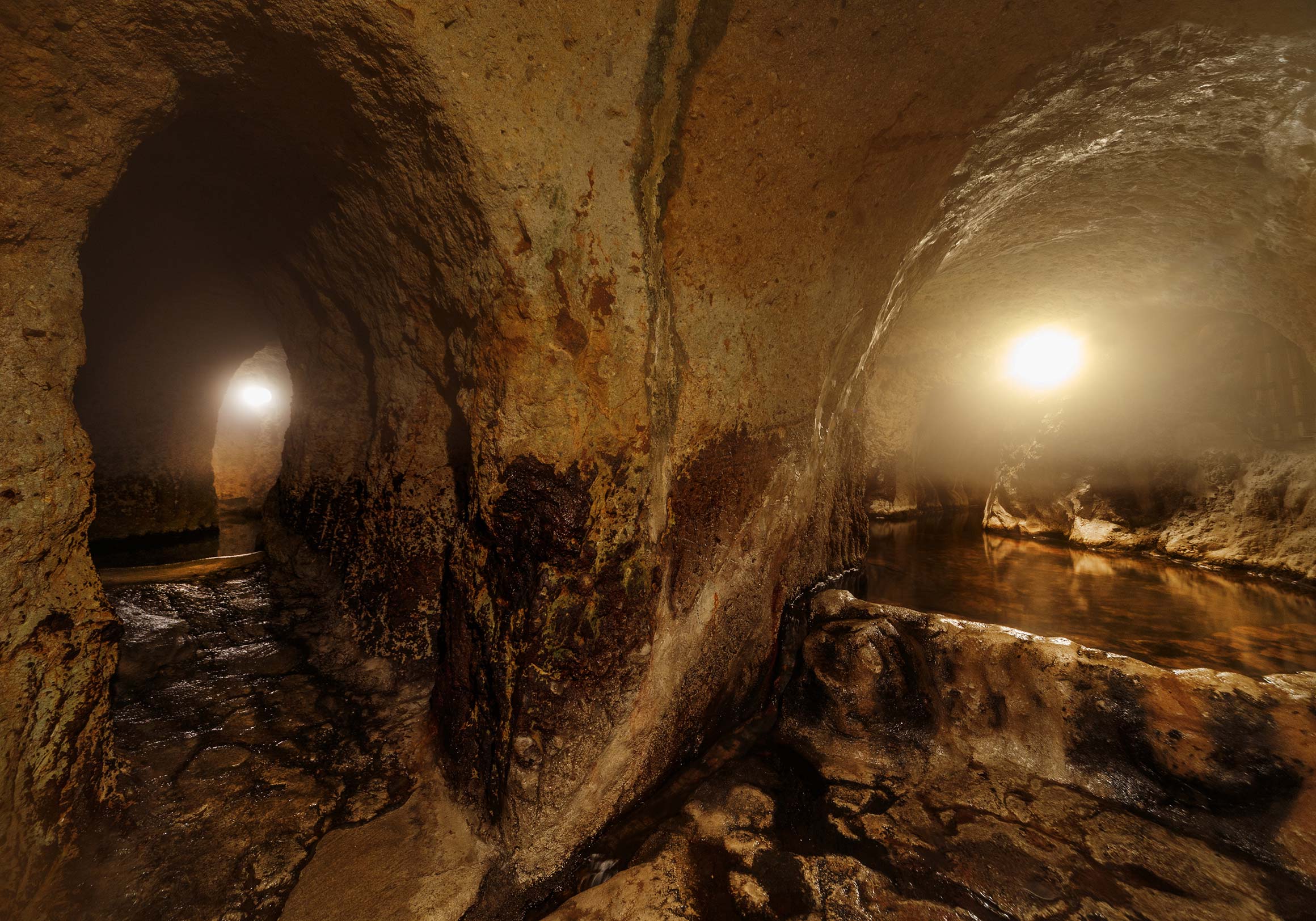
Shinmeikan
Kurokawa Onsen
Kumamoto
Mountain Inn
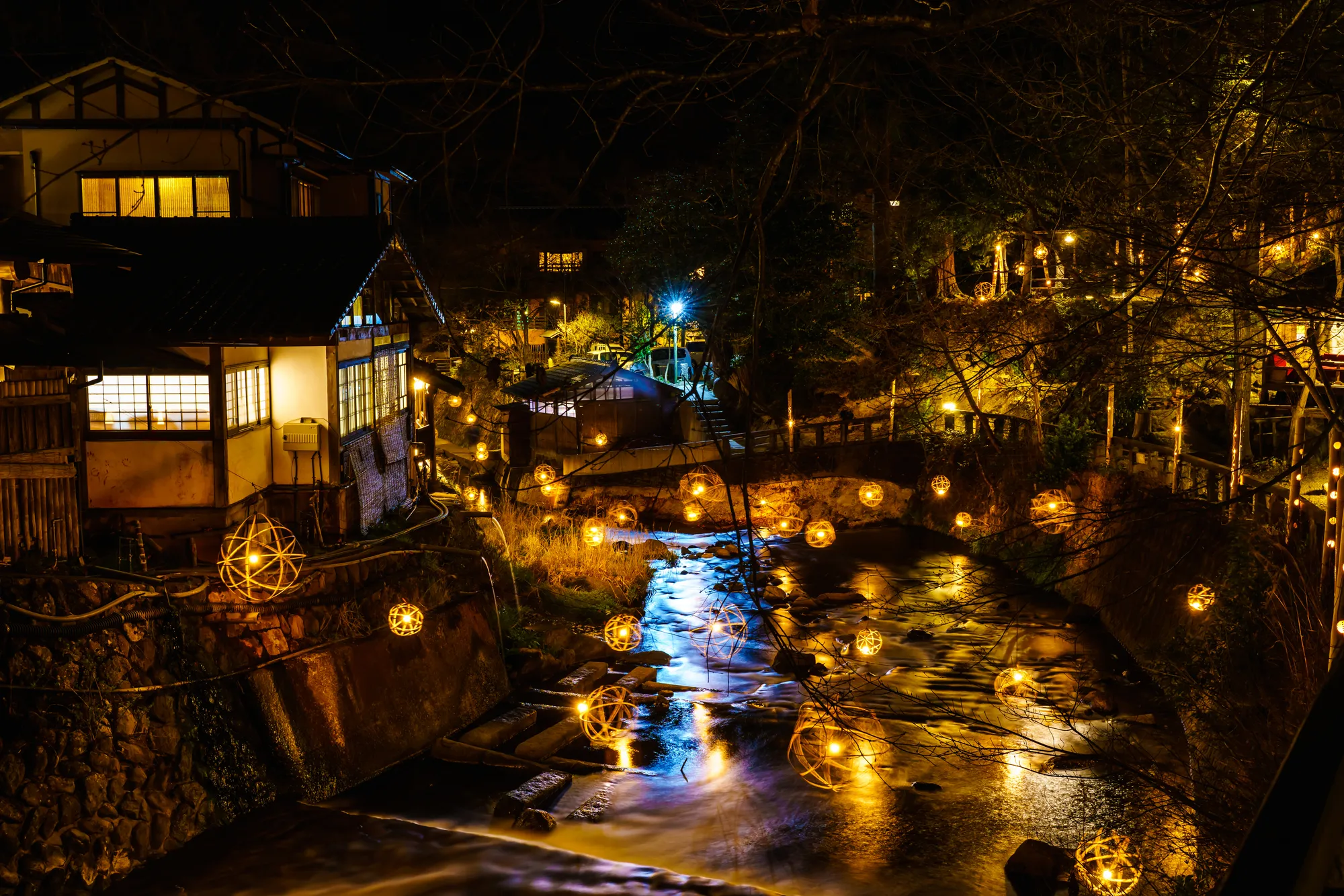
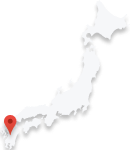
A further hinterland of Aso in Kumamoto Prefecture. Kurokawa Onsen Township is located in the north-central area of Kyushu on the border with Oita Prefecture. Located at an altitude of 700 metres, it is surrounded by a mild climate and beautiful natural surroundings. Kurokawa Onsen, where 30 inns are gathered, has created a landscape of "high-quality satoyama" with the help of many people involved. In addition, the bill for bathing in the "open-air bath tour" gradually became known, and it became popular as a hot spring resort in the national ward. In Kurokawa Onsen Town, we consider all of the 30 inns and the scenery of the satoyama as "one inn". The word that expresses this is "Kurokawa Onsen Ichiryokan". Each ryokan is a "separate room". And the path that connects the inns is a "crossing corridor".
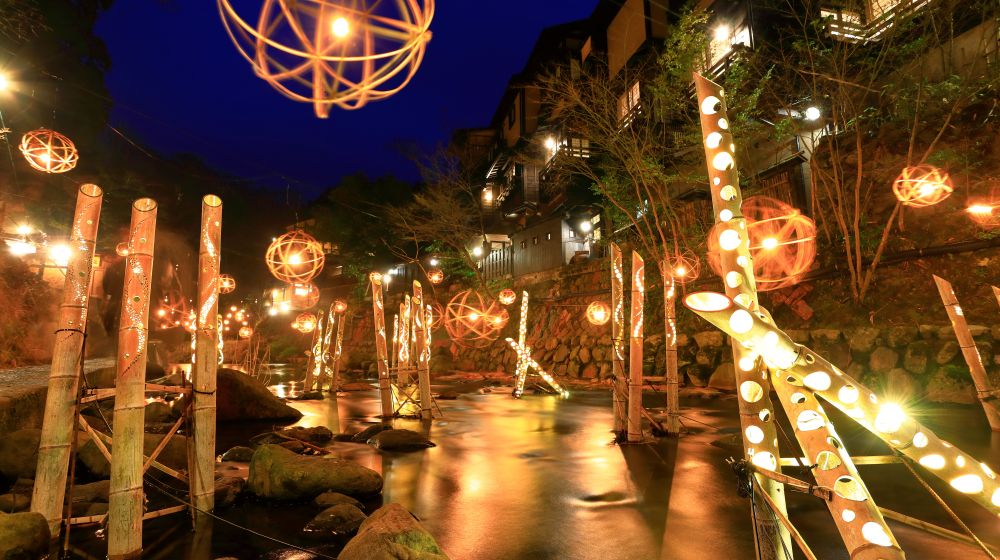
The scenery of the entire hot spring town blends into nature as if it were a single inn. In Kurokawa Onsen Town, there are dumpling shops, shops where you can eat tofu cuisine, and shops where you can buy souvenirs typical of Japan. It is also recommended to wear the yukata provided by the ryokan and walk around the hot spring village. The main springs in Kurokawa Onsen are simple sulfur hot springs and weakly alkaline simple hot springs. The quality of the springs varies depending on the inn, so it is good to be able to go around with a bathing bill. There are also various types of accommodation. There are also types that emphasize privacy, such as inns where you can stay at a reasonable price, and inns that are limited to couples and adult couples.
The townscape of Kurokawa Onsen is a quiet hot spring resort that spreads out in the mountains of Kumamoto Prefecture.
It is lined with traditional buildings with a sense of ancient history, and is characterized by cobblestone paths and landscapes surrounded by trees. In the center of the hot spring resort, there are inns and quaint inns that flow from the source, and a pedestrian paradise spreads.
Accommodations at Kurokawa Onsen inherit the style of traditional Japan ryokan while also offering a full range of modern amenities. The entire city is surrounded by hot spring culture, and there are many places where you can overlook beautiful nature from the open-air and indoor baths.
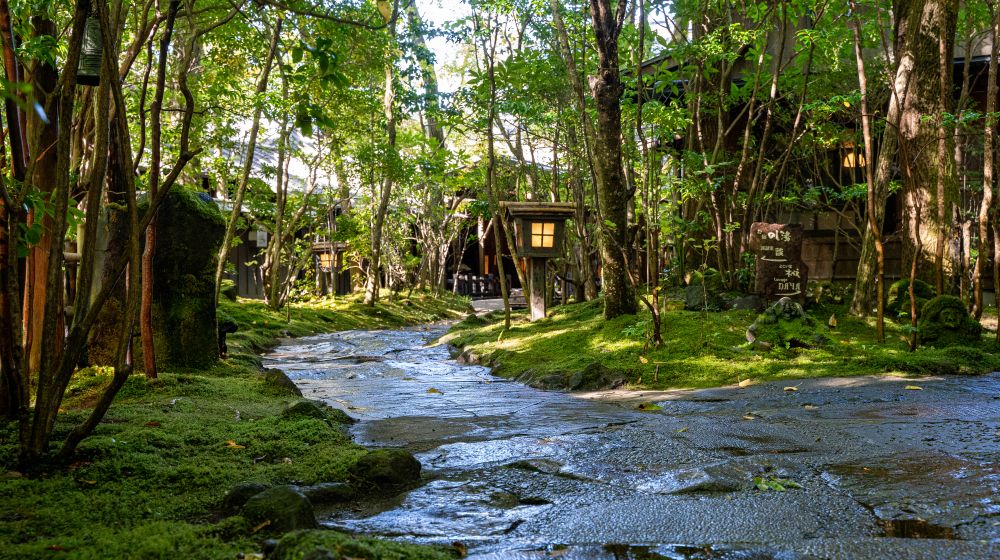
The city also has souvenir shops and restaurants with local specialties and tourist information, where you can enjoy local cuisine made with local ingredients. It is an area where it is easy to walk and stroll, and you can fully enjoy hot spring tours and sightseeing.
In addition, in order to continue to protect the Chikugo River, where fireflies are flying throughout the hot spring town, we are promoting the annual planting of trees and the use of non-harmful soaps and shampoos.
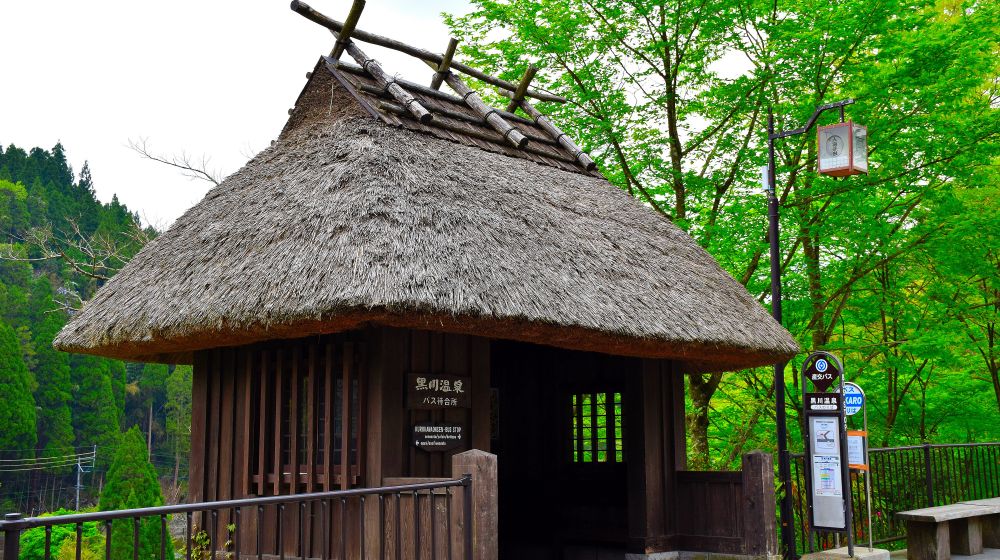
<Airplane>
Haneda Airport → Aso Kumamoto Airport (about 1 hour 40 minutes) → Kurokawa Onsen (about 2 hours))
<Shinkansen and Bus>
Tokyo Station → Kumamoto Station ( Tokaido Shinkansen ,Sanyo Shinkansen about 5 hours 40 minutes) → Kurokawa Onsen (Kyushu Transverse Bus about 3 hours)
<Bus>
Hakata Station (Highway Bus) → Kurokawa Onsen (about 2 hours 45 minutes)
<Bus>
Oita Airport (Kyushu Express Bus) → Beppu Station (Kamenoi Bus) → Yufuin Station (Kyushu Transverse Bus) → Kurokawa Onsen (about 5 hours)
<Bus>
Nagasaki Station (Kyushu Express Bus) → Expressway Kiyama (Highway Bus) → Kurokawa Onsen (about 4 hours 10 minutes)
<Bus>
Miyazaki Station (Highway Bus) → Kumamoto Station (Trans-Kyushu Bus) → Kurokawa Onsen (about 6 hours 50 minutes)
<Shinkansen and Bus>
Kagoshima Chuo Station "Kyushu Shinkansen" → Kumamoto Station "Kyushu Transverse Bus" → Kurokawa Onsen (about 3 hours 50 minutes)
The quality of the springs in Kurokawa Onsen is simple hot spring (weakly alkaline), sulfur spring, chloride spring, bicarbonate spring, sulfate spring, simple hot spring, iron-containing spring, acidic spring, and alkaline simple hot spring.
It is expected to be effective for neuralgia, muscle pain, joint pain, frozen shoulder, motor paralysis, joint stiffness, bruises, sprains, chronic digestive diseases, hemorrhoids, sensitivity to cold, recovery period after illness, recovery from fatigue, health promotion, cuts, chronic skin diseases, chronic gynecological diseases, arteriosclerosis, hypertension, diabetes, gout, chronic constipation, burns, frail children, liver disease, chronic cholecystitis, cholelithiasis, obesity, menstrual disorders, and anemia.Beautiful skin and beauty effects are expected to be effective in pore care, melanin (blemishes) and dullness care, sagging care, beautiful skin regeneration, dry skin care, moisturizing power, oily skin care, cleansing power, blood circulation promotion, collagen metabolism increase, and relocation action.
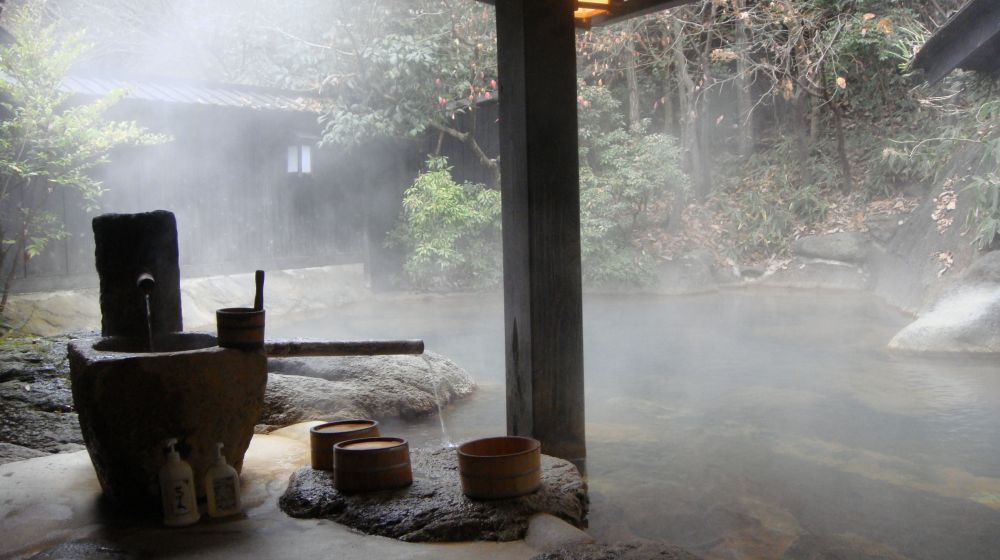
The main characteristics of the spring quality are as follows: As the name suggests, sulfur springs are rich in sulfur components. Therefore, there is a peculiar smell of sulfur, and a unique scent spreads throughout the hot spring area. The sulfur component has a moisturizing effect on the skin and has the effect of softening the stratum corneum. For this reason, sulfur springs are expected to have a skin-beautifying effect and may contribute to the improvement of rough skin and atopic dermatitis. The sulfur component relaxes the muscles and stabilizes the nerves. Soaking in sulfur springs is expected to relieve arthritis, neuralgia, and muscle pain. It warms up well, but you need to be careful because it is very irritating.
There is a legend of the birth of Kurokawa Onsen.
Jinkichi, a poor salt seller, had a sick father. His father wants the melon, but Jinkichi has no money. I had no choice but to offer salt to the local jizo and steal the melons from the melon field.However, he was soon found and beheaded by the landowner. However, it turned out to be the head of Mr. Jizo! Jizo-sama took his place and protected Jinkichi. Later, in order to worship the Jizo-sama with only the neck in another place, a practitioner decided to bring the Jizo-sama home.
In the middle of the trip, when we came to Kurokawa, Mr. Jizo suddenly called out, "Please put it here." So I decided to build a temple in Kurokawa. Then, hot springs suddenly began to spring up in this area, which is said to be the beginning of Kurokawa Onsen. Even now, Jizo-sama is enshrined in the center of Kurokawa Onsen.

From the middle of the Edo period to the Meiji era, it was used as a place for hot spring healing that was well effective for injuries. In 1961, a union was established by six inns. This is the start of the concept of "Kurokawa hot spring town with a collection of open-air baths". However, due to the effects of the two oil shocks, the situation continues to be not lively. In 1986, the union was reorganized. We promoted the creation of the scenery of the Kurokawa hot spring town and the formation of an open-air bath.
Rather than making a profit in one house, he wanted to liven up Kurokawa Onsen Village in the entire area, so he came up with the idea of a "bathing bill" that allows you to use all of Kurokawa's open-air baths. This bill of bathing quickly gained a reputation, and the "open-air bath Kurokawa Onsen" became known throughout the country. In 2016, the Kumamoto earthquake occurred twice, recording a maximum seismic intensity of 7. Even so, the people of the region are always working together to make Kurokawa Onsen Village even more proven.